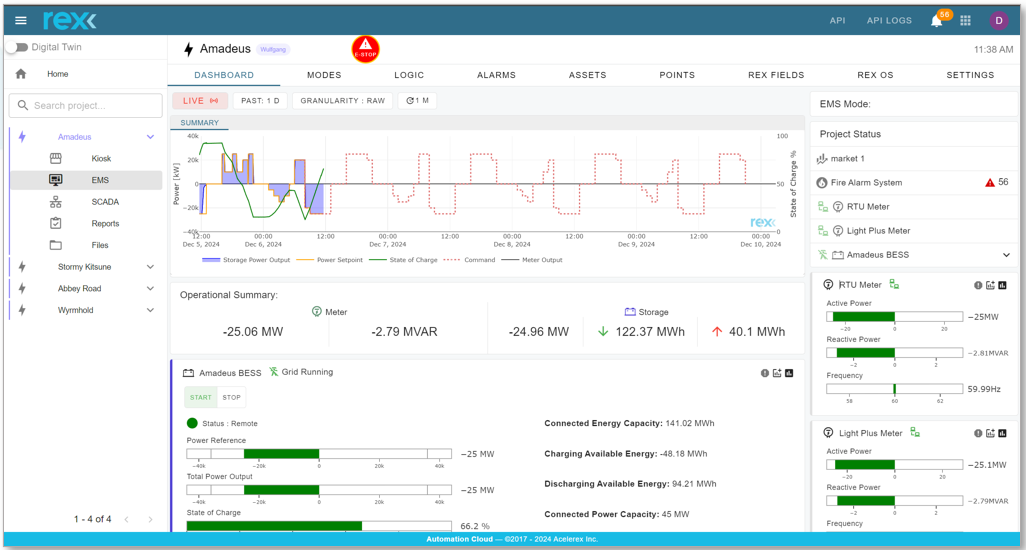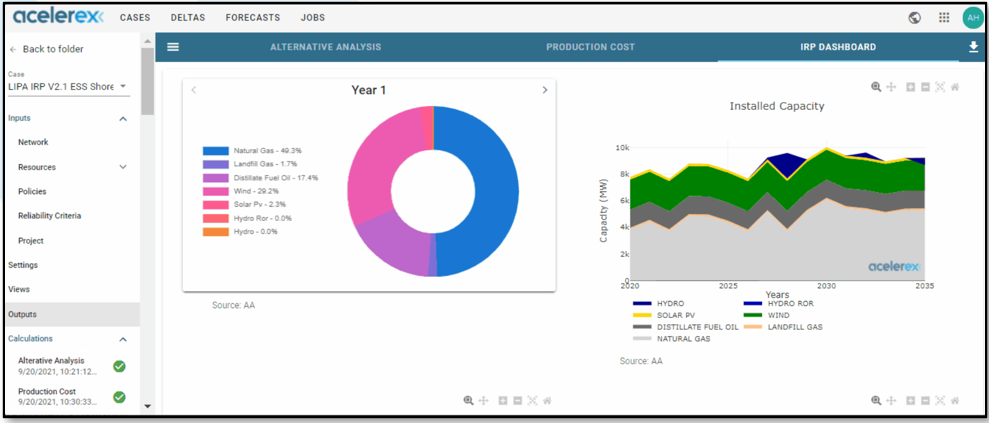
In complex energy, automation, or infrastructure projects, the design is only half the battle. The other half, and often the more treacherous one, is integration: how all the pieces talk, interoperate, and behave as a unified system under real-world conditions.
Integration has become one of the most underestimated risks in modern energy projects. It is no longer enough to assemble high-quality hardware, reliable software, and strong data services. If those elements cannot work together seamlessly, projects run the risk of cascading failures, unplanned downtime, inflated costs, and ongoing maintenance headaches.
A comprehensive approach to reducing integration risk does more than protect timelines and budgets. It strengthens resilience, supports regulatory compliance, and ensures that systems can adapt to changing operational demands.
This blog outlines the pillars of reducing integration risk, informed by both industry perspectives and Acelerex’s hands-on experience with SCADA, EMS, PPC, and Digital Twin simulation—brought together in our Grid Analytics software platform as one turnkey solution.
Integration is where design intent meets operational reality. It is the stage where different vendors’ technologies must interact, where legacy systems must be bridged with new infrastructure, and where theoretical models are tested against dynamic, real-world conditions.
Without a strong integration strategy, projects often face:
Industry research shows the consequences are real and costly:
Integration cannot be treated as an afterthought. In too many projects, design and integration are considered separate phases, often handled by different teams or vendors. This creates silos, misalignments, and costly rework later.
A better approach is to design with integration in mind from day one. That means:
This design-first mindset is embedded in Acelerex Grid Analytics, where system models and control requirements are evaluated holistically before integration begins.
The longer integration testing is delayed, the more expensive and disruptive problems become. “Shift-left” testing, the practice of validating earlier in the lifecycle, saves both time and money.
Digital twin simulation is one of the most powerful tools here. By creating a virtual representation of the system, operators can:
Within Acelerex Grid Analytics, the Digital Twin enables clients to simulate before they buy, uncovering potential issues early and providing confidence that designs will hold under real-world dynamics.

The more fragmented a system is, the more fragile it becomes. Every extra vendor, adapter, or middleware patch introduces complexity and risk. Over time, these add hidden costs in the form of:
This is why a full-stack approach matters. When monitoring, control, forecasting, and automation are designed as a unified architecture, projects achieve:
Acelerex Grid Analytics embodies this principle by combining analytics, forecasting, and integration with EMS and PPC in a single turnkey platform. This reduces fragmentation, accelerates deployment, and ensures long-term resilience.
Beyond technical simplicity, the value of a full stack lies in avoiding duplicate integration costs. When SCADA, EMS, PPC, and Digital Twin are procured from separate vendors, each system requires its own engineering effort to connect, test, and maintain. That means multiple sets of interfaces to manage, multiple points of failure to troubleshoot, and multiple vendor contracts to coordinate. The cost and time multiply with every extra integration layer.
By contrast, when these layers are unified in a single stack, much of the complexity is eliminated from the start. The savings show up in three key ways:
In short, the full stack approach is not just about smoother technology. It directly reduces financial and time risk by eliminating redundant integration work and ensuring that the entire system is designed to evolve as one.
Not every interface carries the same level of risk. A risk-based approach to integration testing focuses on areas where failure would cause the greatest harm, such as mission-critical controls, grid reliability boundaries, or high-value assets.
By prioritizing high-impact interfaces, projects can allocate resources efficiently while still covering their most critical vulnerabilities.
Big-bang integration, where everything is connected all at once, is a recipe for delays and surprises. Instead, incremental integration, bringing subsystems online step by step, allows for:
Continuous integration and testing, familiar in software engineering, is increasingly being applied to large-scale infrastructure and energy systems for precisely this reason.
Commissioning is often misunderstood as the final “turn-on” step. In reality, it is the last major verification stage. It must validate:
The commissioning phase is supported within the Acelerex platform, where automated verification and simulation tools streamline testing and provide assurance that the integrated system will perform as designed.

Integration risk does not end at commissioning. Systems evolve: new assets are added, markets change, regulations tighten. A brittle system that cannot adapt will impose high costs over time.
To reduce long-term risk:
Acelerex Grid Analytics was built with this in mind, offering flexibility to evolve with client needs while maintaining reliability.
Reducing integration risk requires a mindset shift. It is not about patching pieces together late in the process. It is about building integration into the DNA of the project from day one.
Key takeaways:
These principles are embedded in Acelerex Grid Analytics, which unifies SCADA, EMS, PPC, and Digital Twin simulation into a turnkey platform. By reducing integration complexity and providing robust tools for design, simulation, and commissioning, Acelerex helps projects accelerate deployment and ensure resilient, scalable performance.
Contact us to learn how Acelerex can support your next project with proven integration strategies.
___
Sources and References:
Strategic System Integration as a Competitive Advantage: https://www.pwc.com/us/en/tech-effect/cloud/benefits-of-strategic-systems-integration.html
Integrated Systems Testing in Infrastructure: https://www.csemag.com/tips-for-performing-integrated-systems-testing/